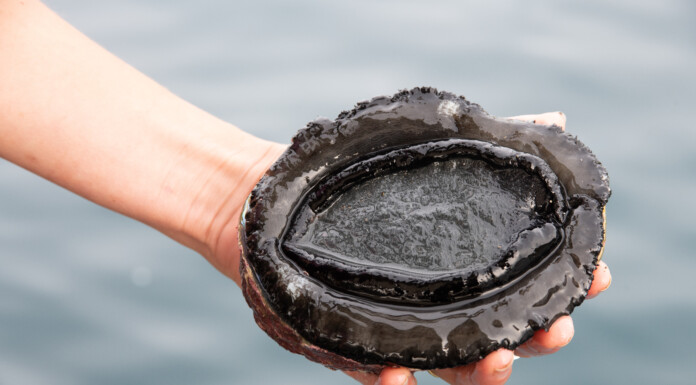With pāua limits for recreational divers cut in half for the summer, the question of why in Wairarapa has been posed by many.
The new limit – which came into effect at the start of September for the central and lower North Island – was decided by Fisheries New Zealand after consulting with the public.
This consultation indicated support from local recreational fishers, community members, and tangata whenua who reported low pāua stocks.
A stock assessment of pāua along Wairarapa’s coastline in 2021 showed that the species were at a sustainable level.
Fisheries management director Emma Taylor told the Times-Age that the changes to bag limits will further support future pāua sustainability.
“The Wairarapa coast is a remote area, and instances of people taking more than the daily limit for pāua are uncommon,” Taylor said.
“Our fishery officers are regularly out on patrol, whether it’s along the beaches or at sea in our patrol vessel.”
Fisheries New Zealand has two full-time fishery officers based in Masterton, aided by honorary fishery officers spread along the coastline.
Taylor said while they alleged poaching or other suspicious behaviour along Wairarapa’s coast, “we encourage people to contact our free 0800 4 POACHER line if they have information that would help fishery officers further protect the area”.
The area for commercial pāua harvesting is restricted to a section of Wairarapa’s coast from Blackhead Point in the north to Turakirae Head in the south.
Fisheries New Zealand monitors the commercial fishery through electronic catch reporting and global position reporting of fishing activity.
To ensure that pāua limits stay at a sustainable limit, a total allowable catch [TAC] has also been set for the first time at 121.188 tonnes.
This comes into effect from October 1, and Taylor said it will remain in place until further notice.
“Commercial fishers are required to record and log their catch with Fisheries New Zealand, meaning we have accurate records of how much of the total allowable commercial catch has been taken,” Taylor said.
“The full commercial catch limit, referred to as the TACC for the fishery, is fully taken most years and the catch rates have remained stable since 1986.”
Taylor said customary fishing catches are reported by the local tangata kaitiaki, and customary harvest is tracked through these figures.
As there is currently no reporting of catch required for recreational fishers, Taylor said surveys and statistical modelling are the most effective measures to estimate the total recreational catch for an area. don’t receive many calls about alleged poaching or other suspicious behaviour along Wairarapa’s coast, “we encourage people to contact our free 0800 4 POACHER line if they have information that would help fishery officers further protect the area”.
The area for commercial pāua harvesting is restricted to a section of Wairarapa’s coast from Blackhead Point in the north to Turakirae Head in the south.
Fisheries New Zealand monitors the commercial fishery through electronic catch reporting and global position reporting of fishing activity.
To ensure that pāua limits stay at a sustainable limit, a total allowable catch [TAC] has also been set for the first time at 121.188 tonnes.
This comes into effect from October 1, and Taylor said it will remain in place until further notice.
“Commercial fishers are required to record and log their catch with Fisheries New Zealand, meaning we have accurate records of how much of the total allowable commercial catch has been taken,” Taylor said.
“The full commercial catch limit, referred to as the TACC for the fishery, is fully taken most years and the catch rates have remained stable since 1986.”
Taylor said customary fishing catches are reported by the local tangata kaitiaki, and customary harvest is tracked through these figures.
As there is currently no reporting of catch required for recreational fishers, Taylor said surveys and statistical modelling are the most effective measures to estimate the total recreational catch for an area.



Hi Bella
Nice article, i am a 44yr old recreational diver that is born and raised in Masterson and the southern east coast is what i consider as my back yard and have dived along it ever since i was able to stand up in it. I am also a qualified P.A.D.I Divemaster that was by majority, trained and certified off of Castlepoint Reef. I have watched how this M.P.I decision for reduction has unfolded, and am quite frankly shocked and disappointed at the decision, in the name of “sustainability” to only lower the “recreational fishers” catch limit when in actual fact all 3 sectors should have been adjusted respectfuly. The only thing this decision will do is make it easier for the commercial sector to catch the TACC quicker. Im happy to discuss it further with you. 🙂
They should cut the commercial paua take in half, not the recreational guys.
Ban commercial paua harvesting completely to ensure stocks are sustainable.
Proof readers are a breed that is now extinct.
In saying that, customary rights need to be done away with. It is just a rort for one section of the community.
Someone needs to read these stories before they are posted. I am constantly reading the same repeated paragraphs and this is not specifics to the Time-Age. What happened to proofreading?
I have noticed the same. I wonder if it is a bug with their publishing platform rather than with the original content.